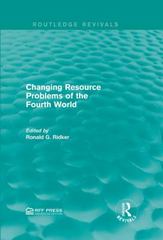Please help
In a given market the inverse demand function is P = 1m Cl per year. The interest rate is r = DDS and the cost structure of a rm is given by CM) = 3t] g. Now assume that originally there was a |Cournot duopoly in the market {with equal costs} and that it would be too costly fer the research institute to enter the market. Alternatively, the research institute can sell the license to both rms. In this case (:3: The optimal annual fee is TDD and profits for rm 1 and 2 are AGO and 400 respectively. D The optimal annual fee is 1,200 and prots for rm 1 and 2 are ACID and 4oo respectively. {:3 The optimal annual fee is TDD and prots for rm 1 and 2 are SUI] and 900 respectively. 0 The optimal annual fee is 1,2d and prots for rm 1 and 2 are 900 and 90d respectively. In a market that operates under quantity competition there are 2 rms {Cournot duopoly). The inverse demand function is P = 240 2 Q. The cost structure of rm 1 is given by {31(q1) = F1 + of of and that of rm 2 is given by {32mg} = F; + c2 o2. Prior to competing, the two rms can engage in research at levets {xi , x2} respectively in order to lower their marginal costs. As a result, marginal costs are of = 40 xi g X2 and c2 = 40 x2 31x1, where 18: 0.?5 and g 2 [1.625. Finally, the research costs are F1 = 3 (x1 FE and F2 = 4 {x2 J2ir'2. If the two rms cannot coordinate their research efforts then the Nash Equilibrium research levels (er , 1(2) are closest to the following: Cl 1G for rm one and B for lm two. 0 15 for rm one and 1Eforrm two. 0 2G for rm one and 1B for rm two. (3 5 for rm one and 4 for rm two. Question B in a marlcet that operates under guantitjl.r competition there are 2 rms (Coumot duopolv}. The inverse demand function is P = 240 2 D. The cost structure of rm 1 is given by Brigg = F1 + c1 of and that of rm 2 is given by Cgrggl = F; + c; g2. Prior to competing. the two rms can engage in research at levels {X1 , 12} respectivelyr in order to lower their marginal costs. As a result, marginal E0515 are {:1 = 40 Jr'r 5212 and 02 = 45' X2 131 11, where 51 = UTE and .32 = 0.525. Finallv, the research costs are F1 = 3 {x1 Fr? and F; = 4 {mfg If the two rms can coordinate their research efforts then the cooperative research levels {It , Jig} are closest to the following: Cl T for rm one and 5 for rm two. Cl 28 for rm one and 22 for rm two. Ct 14 for rm one and it] for rm two. {3. 19 for rm one and ED for rm two. Question 9 in a market that operates under quantity competition there are 2 rms [Coumol duopolv}. The inverse demand function is P = 240 2 D. The cost structure of rm 1 is given by; {31(ng = F; + c, of and that of rm 2 is given by Dgrggl = F; + c; g2. Prior to competing. the two rms can engage in research at levels {x1 , 12} respectively,r in order to lower their marginal costs. As a result, marginal costs are at: 4d Jr, 3212 and c2 = 4d 1'2 , x1, where ,6; = ore and ,32 = 0.525. Finallv, the research costs are F1 = 3 {x1 Fr? and F; = 4 {X2)2. if, instead, ,3; = [13 and ,8; = {1.4. then the Nash Equilibrium research levels are: C} Higher than the cooperative research levels for both rms. Cl Higher than cooperative research levels for rm 1 but lower for rm 2. Cl Lower than the cooperative research levels for both rms. Cl =Higher than cooperative research levels for rm 2 but lower for rm 1








